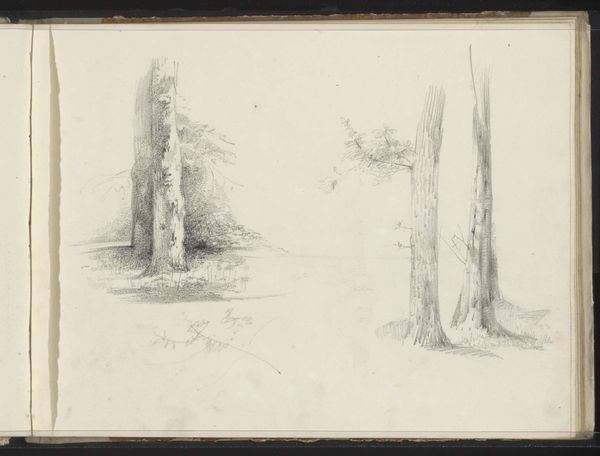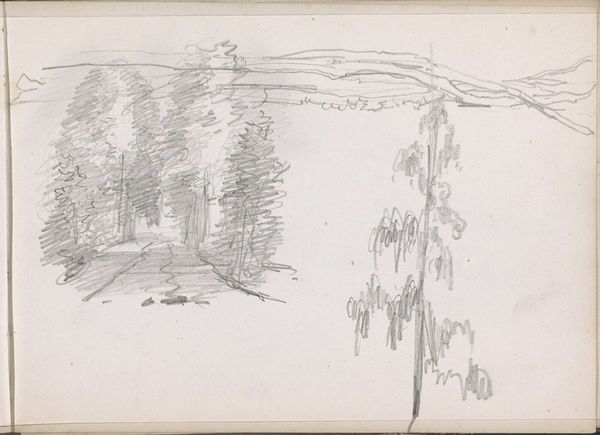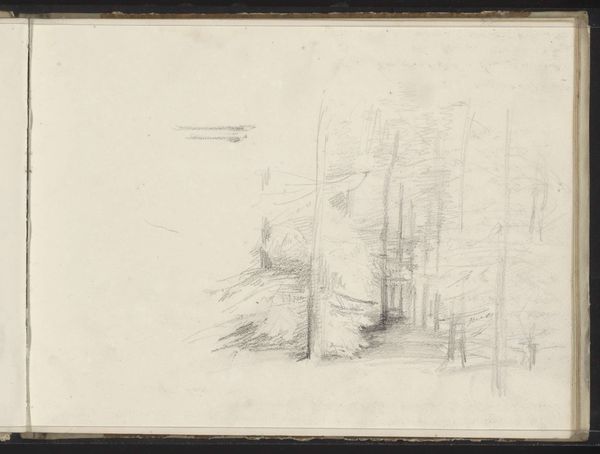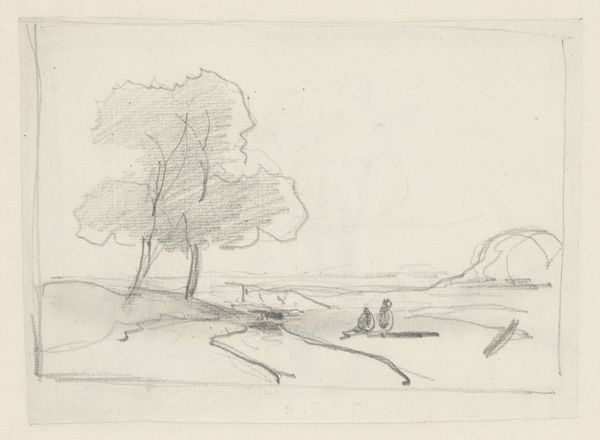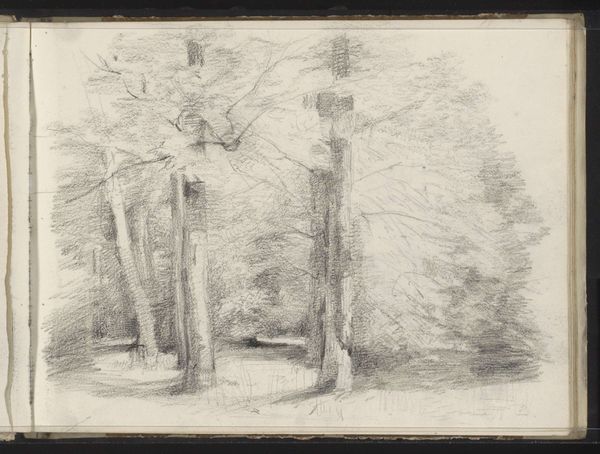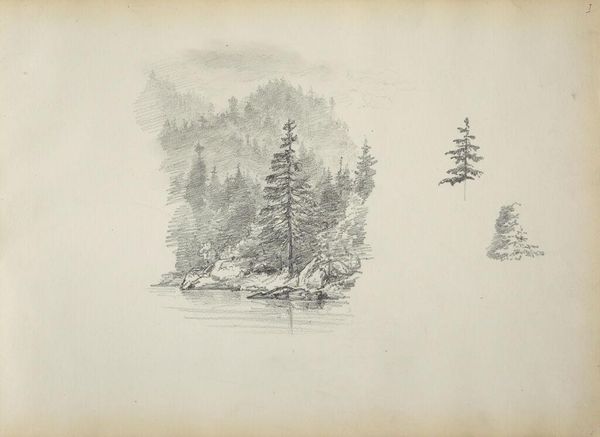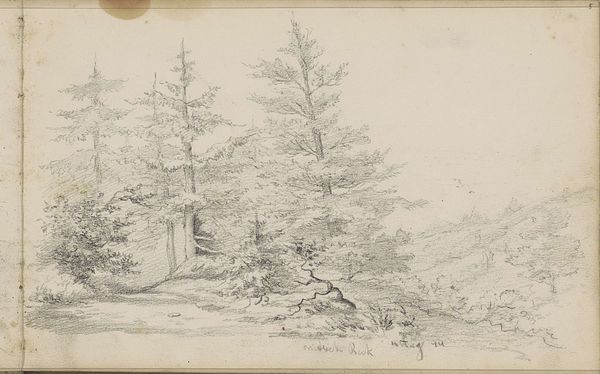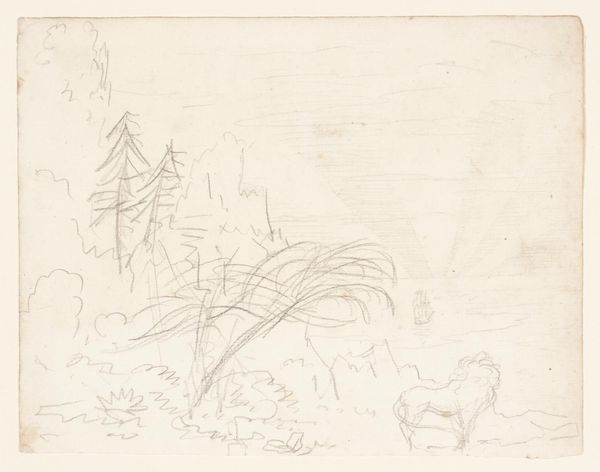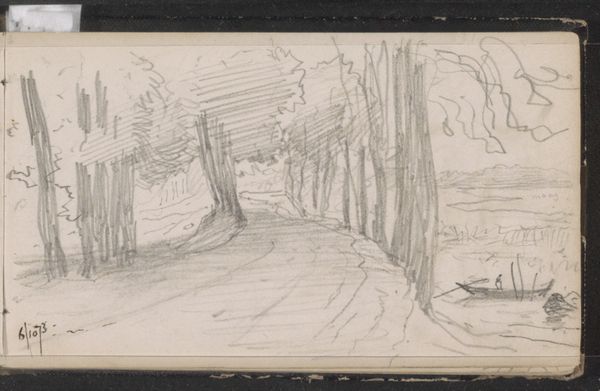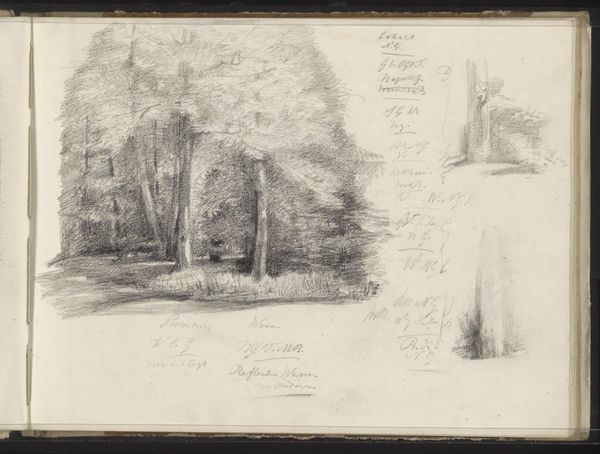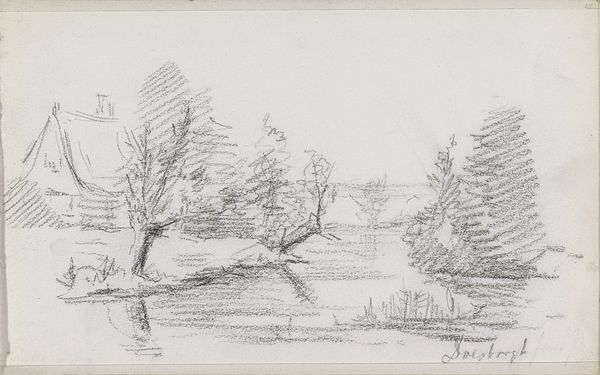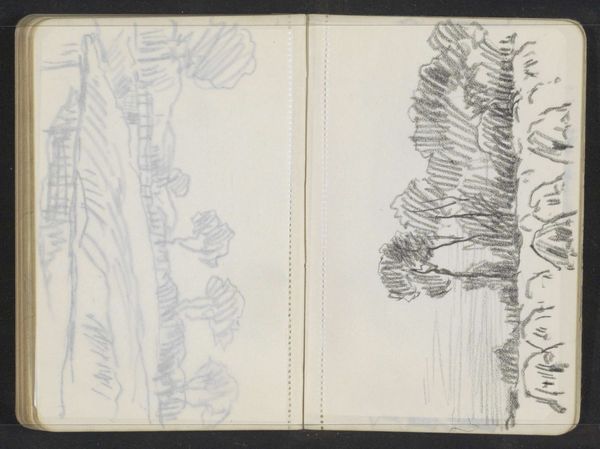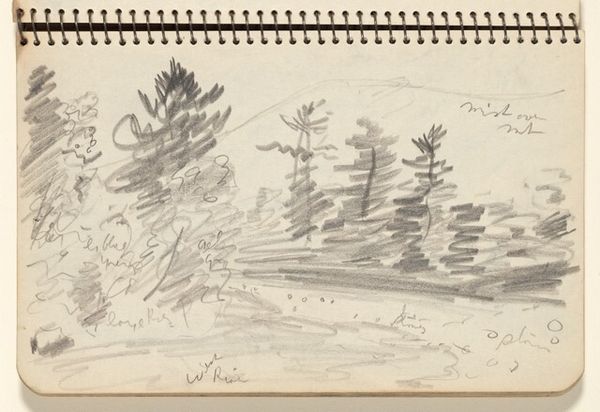
drawing, pencil
#
drawing
#
amateur sketch
#
toned paper
#
pen sketch
#
pencil sketch
#
sketch book
#
landscape
#
personal sketchbook
#
forest
#
ink drawing experimentation
#
sketch
#
pen-ink sketch
#
pencil
#
sketchbook drawing
#
sketchbook art
#
realism
Copyright: Rijks Museum: Open Domain
Curator: Immediately, the fragility of this artwork takes my breath away. It reminds me of fleeting memories, doesn't it? Editor: This is a sketchbook page featuring various landscape studies by Maria Vos, dating anywhere between 1834 and 1906, from the collection at the Rijksmuseum. It's pencil and ink on toned paper. Raw, unpretentious, revealing the material truth. Curator: Truth! Precisely. But also more than that; an aspiration toward truth... like a whispered secret. I imagine Vos standing in the Dutch landscape, just quickly capturing its essence and energy in her sketchbook. Editor: Absolutely, though consider the material conditions... access to sketchbooks, pencils, the time and leisure for artistic pursuits. These are class privileges, remember. Was this a pastime? Study material for larger commissions? I can imagine a debate surrounding production methods that values the swift skill that drawing from nature required. Curator: Mmm, it whispers something universal. Looking at that copse of trees reflecting in the still water; it's almost like the surface is a veil—like a portal! Editor: Portals are produced by other conditions. And that tone isn’t accidental: preparing paper requires certain manual labour that involved several actors with specific know-how. And for me, the pencil strokes! I am keen to see how such simplicity of process leads to intricate textures. It almost feels a trace of labor to me. Curator: But it's not only manual effort we’re looking at, it's about inspiration. Imagine how many sketches Vos made on days when the light and mist combined in some uniquely transporting manner. Editor: A nice thought. However, my point is this drawing involves an element of "making." Its apparent simplicity requires acknowledging layers of craft, labor and capital to allow those trees, forest trails and the water's edge in their final form to surface for us. It brings value to what art represents by what processes were involved too. Curator: You’ve helped me consider what such gestures signify, how they conceal as much as reveal; now I won't forget to think of how those processes influenced how her hand met the paper and allowed those landscape forms to emerge. Editor: Yes! And hopefully you can consider more often those who contribute at other material stages to provide and conserve the “space” we might interpret things as ethereal when their roots may be very real.
Comments
No comments
Be the first to comment and join the conversation on the ultimate creative platform.
